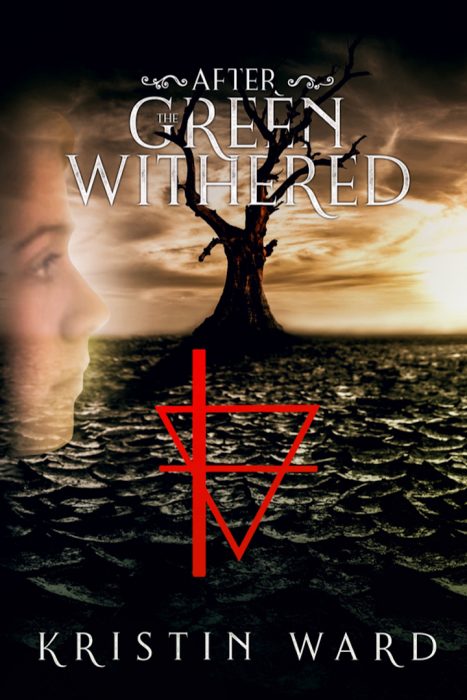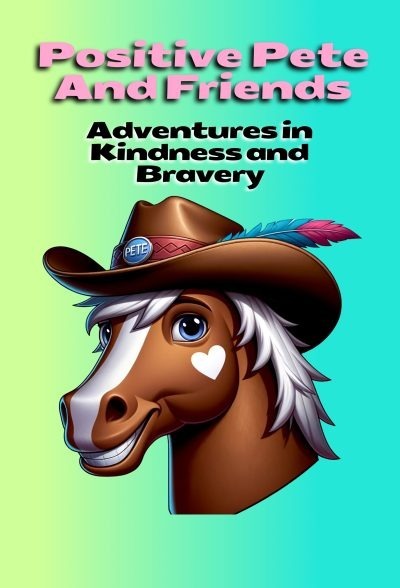 After the Green Withered by Kristin Ward
After the Green Withered by Kristin Ward
They tell me the country looked different back then.
They talk of open borders and flowing rivers.
They say the world was green.
But drought swept across the globe and the United States of the past disappeared under a burning sky.
Enora Byrnes lives in the aftermath, a barren world where water has become the global currency. In a life dominated by duty to family and community, Enora is offered a role within an entity that controls everything from water credits to borders. But it becomes clear that not all is as it seems. From the wasted confines of her small town to the bowels of a hidden city, Enora will uncover buried secrets that hide an unthinkable reality.
As truth reveals the brutal face of what she has become, she must ask herself: how far will she go to retain her humanity?
https://youtu.be/n8buXMPT-KY
Targeted Age Group:: YA
Heat/Violence Level: Heat Level 3 – PG-13
What Inspired You to Write Your Book?
I was inspired to write After the Green Withered and the sequel, Burden of Truth, while completing research for a graduate course I wrote in environmental education. My course included concepts regarding earth’s history and, within this, I learned a great deal about the impact humans have had on the planet. As I studied and composed the course, an idea began to germinate:
What if there was a global drought due to the impact humans have had on the planet?
That seedling idea sat with me for a year or so as I finished my course writing and began to teach a few graduate courses. Eventually, I began to write the story but it took a whopping five years to get it from draft to publish! The final push to finish was due to the myriad of issues that are going on environmentally. When I read a stunning article about Cape Town’s water crisis, I knew I needed to get my book published so I buckled down and finished the first draft, finally publishing in May of 2018.
How Did You Come up With Your Characters?
Delving into the dystopian genre for my first books was a necessity. The story I slowly developed over the years was always going to be a dystopian tale due to the very context of it and the overarching message I am trying to convey. When I considered the primary voice of this story, I knew I wanted a strong female lead to tell the tale from her perspective. Enora has inherited a world of man’s making and lives in a society that is rigidly controlled. Her story is one of self-discovery as she comes face to face with the calculated and the cold reality of what lies beyond the borders of the town in which she grew up. As experiences slowly peel away layers that have masked the truth of the world in which she lives, Enora will have to decide how far she is willing to go to retain her humanity.
Book Sample
We’ve all heard the stories of how it began, but no one really knows the truth because no one ever owned up and took the blame. Anyone who was there when it all started is long dead and all that remains is their awful legacy. All I know that is real, true, is that the world wasn’t always like this. It used to be green.
I suppose the awareness of a looming crisis began slowly, perhaps with a faucet that ran dry or maybe a water restriction where there had never been one. Whatever it may have been, there was a turning point and from that moment on the United States of the past disappeared under a burning sky.This is what I have come to understand of our history, that thing buried and skewed under hidden agendas and untruths…
In the early 21st century, the voice and face of the country changed. An exploding population triggered an energy crisis that swiftly grew beyond our borders and enveloped the world. Wars erupted over control of these dwindling energy sources, resulting in a recession that dwarfed the crash of 1929. Our nation’s leaders responded by doubling down on efforts to extract resources in every forest, ocean, and watershed, rather than investing in what many viewed as ‘unproven technologies’. Companies that specialized in advancements in sustainable energy were forced into bankruptcy, halting the tide of progress. Environmental protections ceased to exist as everything from national parks to the once pristine Arctic disappeared under an onslaught of drilling and mining that left these places barren and poisoned. Coal, oil and gas burned, unchecked and ignored. The results were devastating.
Massive storms, brought on by rising temperatures, began to dominate newscasts. People watched as violent hurricanes in the Indian Ocean destroyed whole communities, washing away thousands who had been unprepared for the force of the waves. The eastern seaboard saw Category Five hurricanes on a monthly basis, until many areas became uninhabitable. But the drilling continued.
Extreme weather escalated, as tornados ripped through areas in Europe and Asia that had never experienced the phenomenon before. In one night, Hautmont, France was wiped off the face of the earth as a previously inconceivable F6 tornado spent twelve minutes on the ground. And yet the event was soon forgotten, the majority of citizens preferring stories of scandal and entertainment and war.
As the climate grew hotter and drier, the last of the ice caps melted belching out methane trapped for millions of years and filling the ocean with too much fresh water, creating a chain of unfathomable and merciless events. The Maldives disappeared under the sea, followed quickly by other island nations across every ocean. Tens of millions of people were left homeless in places like Japan, the Netherlands and Bangladesh, as huge swaths of land became submerged, leaving many cities uninhabitable swamps. New York City was inundated with tides that never receded. While Florida became a ghost of its former self, as millions fled the water-ravaged state.
The desalination of the oceans, combined with high levels of acidity and rising temperatures, took effect. Beached whale species, from dolphins to orcas, became a common sight. Coral reefs died off on a global scale, looking like bleached underwater graveyards. Fishing communities went bankrupt and prices for seafood skyrocketed until only the very wealthy could afford it. The ecological imbalance further poisoned the already toxic oceans, making even the technology to convert salt water to fresh water for human consumption only possible for the elite. And still, the refineries continued to process their crude oil.
The sixth mass extinction event in Earth’s history continued. Species from insects to mammals died off at unprecedented rates, unable to acclimate to changes that occurred in years as opposed to centuries. The few remaining rainforests saw these extinction events on a massive scale and those species unlucky enough to need polar climates were gone after a few years.
Precipitation continued to dwindle while massive dust storms swept through towns and cities, choking the air and causing havoc for those stuck in their midst. The city of Las Vegas experienced a storm of such intensity that the sky turned black as sand and dust covered every road and building, until the metropolis was buried under a layer of dirt that took months to cleanup. While in the western half of the country, wildfires ravaged California, displacing thousands and turning huge swaths of land to smoldering ash. And through it all, fingers of blame, rather than solutions to the root cause, became the norm as scientific evidence was censored.
Drought continued to creep across the world, silent and ruinous.
Initially, the areas hardest hit by drought were underdeveloped countries. Starving children or withered remains of cattle splashed across the screens in the living rooms of U.S. citizens who, though saddened by the images, remained ambivalent. Most people viewed the water wars raging in Africa or the battle over rights to the Amazon River, with a sense of detachment. But there were some who voiced their warnings, pitting themselves against the majority, fracturing the nation.
Environmental activists attacked refineries and shipping lines, disrupting the flow of resources to such a degree that they were labeled terrorists and hunted down by the government. Those who took a pacifist approach did no better at conveying their message, as their forewarnings were mocked and disregarded as hippie ideologies by those in power. Eventually, messages of the resistance were defined as alarmist rather than credible, making them easy for people to discount. All the while, areas experiencing water restrictions grew. But most citizens saw these measures as nuisances, rather than portents of worsening problems. This perception would not last.
It was a global drought of unprecedented proportions that cared nothing for which hemisphere you lived on nor how much money you held in your bank account. Over time, even the staunchest disbelievers were faced with undeniable truth. Emergency measures to curb the effects to the US were taken and hope stirred in the minds of the populace. Those technologies that were shuttered in the early days took on new life in ambitious plans for fusion power plants and hundreds of square miles of solar panels and wind turbines. Rumors of unmanned spaceships launched into the solar system to find a new home and escape from our dying planet, circulated throughout the country. But time eroded such fantasies and reality crushed those hopes, as years turned into decades that saw no relief from the storm of devastation. The efforts were simply too little and came far too late.
Eventually, our nation’s borders closed and all refugees were turned away, no matter their circumstances or family connections. Those citizens made homeless by severe weather migrated, desperate and angry. The land itself began to wither and no part of the country was left untouched by the unrelenting scarcity of water.
After several years, rain became a fairy tale for children to imagine. The aquifers, which provided water for the breadbasket of the country, dried up. Crops shriveled while the nation spiraled into chaos. Food shortages became common and soon starvation and civil unrest were rampant. Those starving children and dying cattle were no longer relegated to the problems of ‘other countries’. Parents struggled to feed their families, further driving people out of their homes in a frantic search for food and water. This brought out the ugliness in human nature that you only see in times of desperation.
A militarized presence emerged as violence became pervasive. Riots and looting led to lottery systems for food and water. This method ultimately failed, as seen in cities like Houston where a small war erupted and obliterated the landscape. States threatened to secede. Fearing a nationwide revolution, the president took extreme measures to preserve the majority of the country. Hawaii and Alaska were stripped of statehood, being too remote and damaged by rising seas and economic catastrophes.
The remaining lower forty-eight states were restructured to eighteen, each representing a unique river basin. This reorganization was aimed to prevent states from entering periods of civil war over water rights as each state now had its own water resources. Borders grew along these new lines, complete with heavily guarded checkpoints to keep the influx of destitute people from pouring in and overtaxing an already untenable situation. Towns followed suit as entire communities were abandoned. Soon it became apparent that to live outside a regulated community meant death. Survivalist factions arose in opposition, but were dealt with, swiftly and severely. The country became unrecognizable.
Not everyone had ignored the signs of catastrophic problems. In the shadows, one group led by a visionary man named Oren Frey, had seen an opportunity and quietly took control of water resources from reservoirs to real estate above aquifers. When things began to look desperate, this agency, The Drought Mitigation Corporation, offered their assistance in distribution and long-term water usage. Under the leadership of an impotent president, the DMC’s power grew, while the pillars of democracy became more divided and vulnerable. By the time the DMC was fully entrenched, the drought had taken the lives of millions and changed the face of the country forever.
I live in the aftermath.
My memories of childhood are plagued by water, or rather the lack of water. Laundry sitting in a dry wash tub or covered in dust on the floor. Food containers we have to scrape and wipe down with a towel so they never really get clean. Dirt that never leaves the underside of my fingernails because washing my hands is not always an option. Dust storms that roll through and leave behind a coating of grime on every surface, even the inside of my nostrils. And then there are the nightly, televised announcements of civil wars, border violence, and rationing. These are the images and realities of my life at seventeen years of age because, by the time I was born, water was the global currency.
Links to Purchase Print Book version – Click links for book samples, reviews and to purchase
Buy After the Green Withered Print Edition at Amazon
Buy After the Green Withered at Barnes and Noble
Buy After the Green Withered at Indiebound
Links to Purchase eBook version – Click links for book samples, reviews and to purchase
Buy this eBook On Amazon
Buy this eBook on Barnes and Noble for Nook
Buy this eBook on iBooks
Buy this eBook on Kobo
About the Author
Please join this author’s email list
Learn more about the author on their website
Follow the author on Amazon
Follow the author on Social Media:
Facebook
Twitter
Goodreads
Instagram
LinkedIn
YouTube Channel
All information was provided by the author and not edited by us. This is so you get to know the author better.










